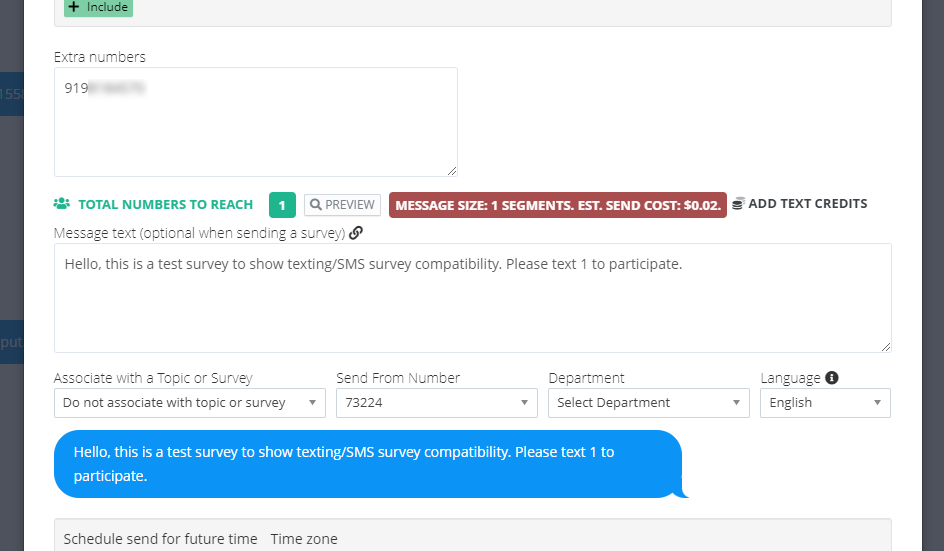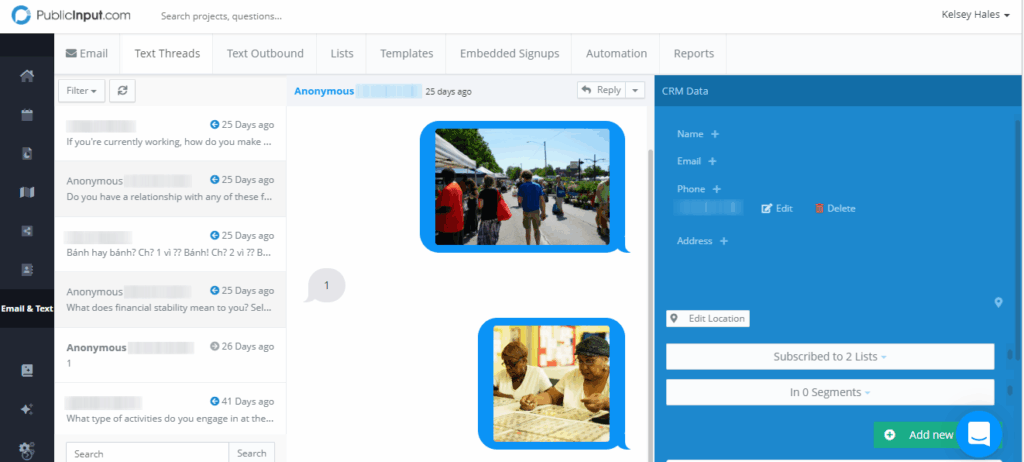10 SMS/Text Messaging Best Practices to Consider Before Launching Your Next Campaign

Launching an SMS Text Message Campaign: 10 Best Practices to Consider
Text messaging is a highly effective method for reaching residents, particularly hard to reach populations like those with low household incomes and rural communities. For state and local government agencies looking to add more channels to their communication strategies, SMS/text messaging offers an efficient way to engage residents.
Before launching an SMS/text messaging campaign, here are some best practice considerations to ensure your success and maximize diverse community engagement.
1. Define Your Objectives
Outlining clear and realistic objectives is essential before launching any campaign. Defining these objectives is as simple as defining what you hope to achieve. Whether it’s disseminating critical updates, gathering feedback, or increasing attendance at public meetings, having well-defined goals will guide your strategy and measure your campaign’s success.

2. Understand Your Audience
Knowing who you’re communicating with is vital. Segment your audience based on factors such as geographic location, demographic information, or specific interests. Use custom signup keywords to create targeted subscriber lists in a resident database, enabling personalized and relevant communication.
3. Ensure Accessibility and Inclusivity
Text messaging can bridge gaps in accessibility, especially for residents with visual impairments or low literacy levels. Implement text-to-speech features and offer multilingual support to cater to diverse communities. This ensures that your messages are accessible to all, promoting inclusivity.
4. Leverage Two-Way Communication
Text messaging isn’t just about sending information; it’s about engaging in a conversation. Enable two-way communication to allow residents to respond, ask questions, and provide input. This interaction can be invaluable for understanding community needs and fostering a sense of involvement.
5. Integrate with Existing Communication Channels
To create a seamless communication strategy, integrate SMS with your existing channels like email, social media, and public meetings. This synchronization ensures consistent messaging and maximizes reach. For example, use text messages to remind residents of upcoming meetings and provide follow-up information via email.
6. Use Text Message Surveys
Text message surveys offer a convenient way for residents to provide feedback on-the-go. Design surveys in plain language that are concise and easy to complete. Collecting this input helps capture a broader range of opinions, similar to those obtained through online surveys or public meetings.

7. Maintain a Centralized Database
Aggregate all input and communication into a centralized resident database. This single source of truth helps in tracking engagement, analyzing data, and closing the feedback loop effectively. A centralized system ensures that no input is lost and enables comprehensive follow-up communication.
8. Ensure Compliance with Regulations
Stay compliant with regulations such as the Telephone Consumer Protection Act (TCPA) and other relevant laws. Obtain explicit consent from residents before sending messages, provide opt-out options, and respect privacy concerns to build trust and avoid legal issues.

9. Monitor and Analyze Performance
Regularly monitor the performance of your SMS campaigns. Track metrics such as open rates, response rates, and engagement levels. Use this data to refine your strategy, improve message content, and ensure your objectives are being met.
10. Plan for Long-Term Engagement
Think beyond immediate needs and plan for sustained public engagement. Regularly update your resident audience with relevant information, follow up on feedback, and continuously seek input to maintain an ongoing dialogue with the community.
Thoughtful Actions Drive Higher Participation
Integrating SMS/text messaging into your community engagement strategy offers your organization a powerful tool for instant, inclusive, and effective communication. By considering these factors, you can launch a successful SMS campaign that not only reaches but also resonates with your community, driving higher participation and more meaningful interactions.
By leveraging the strengths of SMS text alongside traditional methods, you can create a comprehensive and dynamic communication strategy that supports diverse community needs and preferences. Embrace the potential of text messaging to supercharge your community engagement efforts today.






